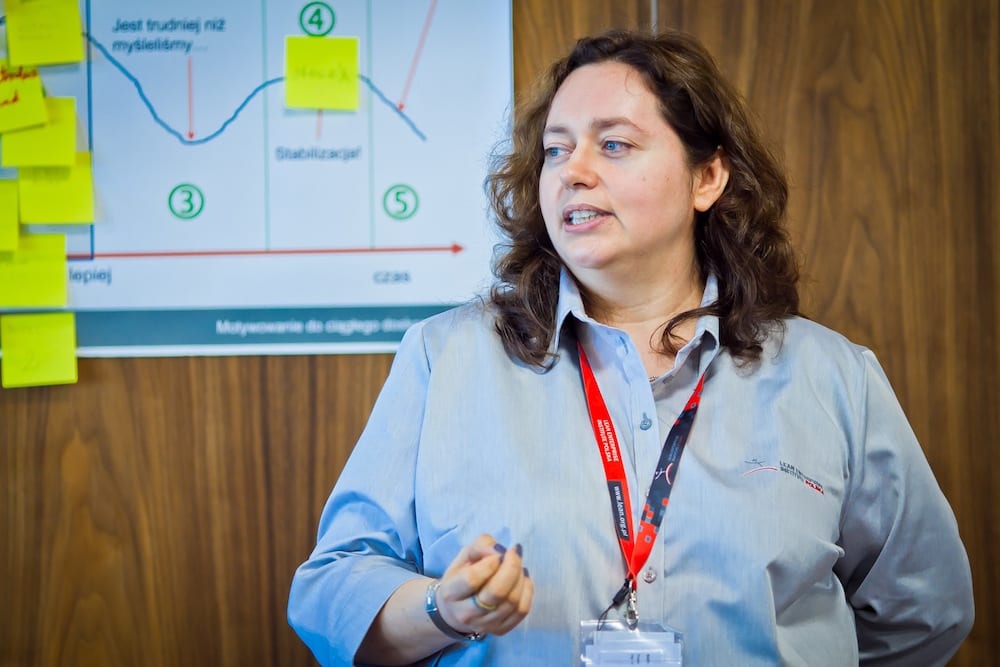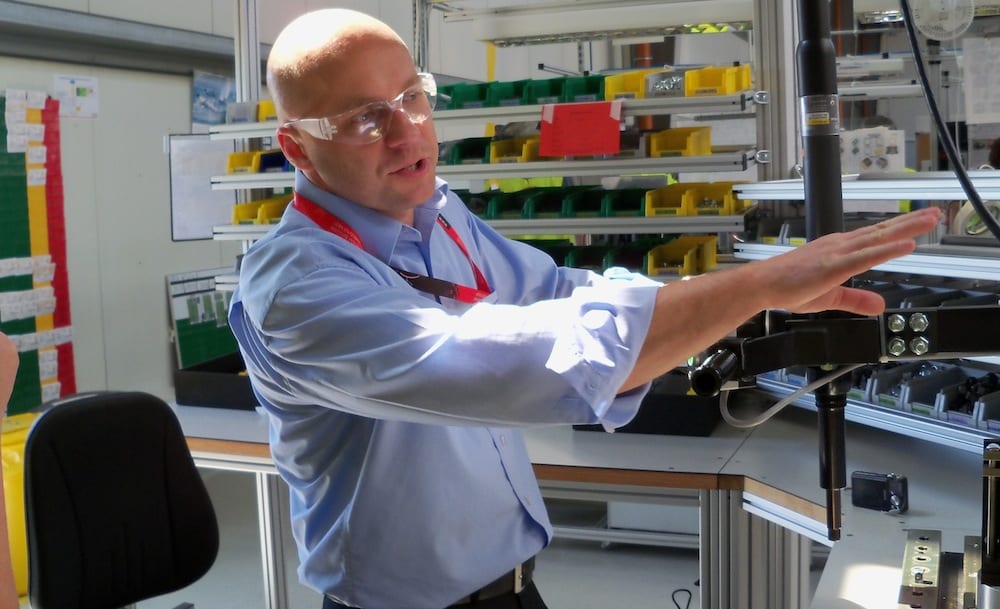
Three ways to destroy your suggestions system
FEATURE – A kaizen suggestion scheme has the ability to unlock the potential of lean change in our organizations, but too often our mistakes kill it before it even has a chance to take off and gain momentum.
Words: Malgorzata Jakubik and Robert Kagan, LEI Polska
As no true lean person should walk by waste and ignore a chance for improvement, we felt the need to put together our reflections on things big and small that, while working with our customers, we have found to be common “speed bumps” or even show stoppers in a lean implementation. Whether systemic or tool-related, these obstacles have one thing in common: they tell our “war stories,” which we want to share with those on the road to lean, hoping they will warn them against frequent hazards others have struggled with.
- THREE HIGHLY EFFECTIVE WAYS TO KILL YOUR NEW KAIZEN SYSTEM -
No lean implementation is complete without processes dedicated to turning the company’s culture into one of continuous improvement and employee engagement. There is no doubt that one of the most effective processes to enable this change is the use of a kaizen suggestion scheme, aimed at channeling the power of the small ideas generated by employees.
No wonder developing suggestion schemes is often one of the things we help our customers with, as we facilitate their lean journeys. Funny enough, we are usually the ones pushing for fast-paced change and dynamic decision-making, but not with kaizen systems. With these, we have been known to tell our customer to slow down and avoid rushing into anything until the foundations are properly laid down.
This is because the system is really easy to kill if it starts off weak. And if it starts off weak and then dies, resurrection is extremely painful and costly.
If you believe a kaizen system is simple and a “just do it” initiative that is part of a bigger lean project, stop for a minute and consider the below: three effective ways to kill your new kaizen system, and how to avoid making those mistakes.
- 1st way to kill a kaizen system: launch it too early, as soon as the word about lean starts to spread around the organization.
The manager of a medium-sized automotive plant was very determined to introduce an employee suggestion scheme at the early stages of his lean implementation.
“Lean in about employee involvement and their ideas! I want them to be involved from the start; they need to know they are critical to making the changes successful! I am prepared to pay well for their input. And I want them interested in the process, too, so I will pay for all ideas raised, regardless of whether they are later implemented or not. I want a positive buzz and energy in the plant! Let them bring the ideas!”
When a plant manager wants something, his people make it happen: before long, the number of ideas skyrockets. Given that the applicability of an idea was not an issue and that there was money to be earned, people continued to bring suggestions that involved, among other things, moving equipment from one side of the plant to the other (and then back), or applying ergonomic principles that actually limited one-piece flow. Sometimes they submitted as ideas things that they already did as part of their regular jobs.
The activities performed failed to translate into the expected benefits for the plant. The money budgeted for the program started to run out. Moreover, with the introduction of the “pay for any idea” system, people started to expect monetary compensation for every single initiative or action they suggested, with no place for free-of-charge creativity.
The plant manager was left with no other choice but to suspend the program. “People do not appreciate what we wanted to do for them,” he complained.
- 2nd way to kill a kaizen system: make employees wait forever for their ideas to be assessed and then implemented.
The corporate office sent a directive – next year all employees are expected to submit at least five kaizen ideas. No exception. The current score in the organization was 0.5 per person, and it was clear that increasing it 10 times would not be easy.
The manager could already see the problems: they had planned the program well, but made it too small. There was only one person coordinating the evaluation of ideas, spending just a couple of hours of maintenance availability every week to actually work on the ideas submitted (the program paid only for the suggestions that got implemented). Having failed to negotiate a slower, more gradual increase in the number of required suggestions (orders from corporate were clear), plant management hit the gas pedal – there was an information campaign, motivational talks, new targets set and promises made. Soon enough, ideas flooded the kaizen coordinator and the maintenance crew, which had reached four people per employee, almost to the target level. The manager announced the success of the initiative and employees waited for their rewards.
To their surprise, however, that didn’t happen. First of all, the kaizen coordinator struggled to get the ideas processed; secondly, maintenance struggled to get the good ones implemented. The idea-to-implementation lead-time grew longer and longer, reaching four months on average. Motivation quickly dwindled and the number of ideas fell dramatically: the program was basically a dead initiative.
- 3rd way to kill a kaizen system: mess up with the criteria for accepting ideas; or make them too complicated, too open or focused solely on bigger ideas with a direct economic pay-off
Deciding on the criteria for accepting an idea as a kaizen can be tricky. If you make them too complicated or make them too open and subjective, people will not understand how they can ever “win” at this and start to feel used by their bosses. One of the biggest mistakes you can make, which immediately kills the spirit of kaizen, is focusing only on the big ideas and neglecting and ridiculing the small ones.
Such was the case in a home appliance plant we worked with. The lean manager was under a lot of pressure and could not meet the targets set by his plant manager. “She wants everything improved in such a short time, with no money to invest in the optimization activities. She’s just cut my Kaizen budget in half,” he would say. Trying to make the best of his limited resources, the lean manager (supported by the plant manager) decided to change the criteria for determining what a good improvement suggestion is. Gone was the approach calling for small rewards for small ideas: now management would only reward (but reward well) those ideas that focused on financial gains, especially those that involved headcount reduction. Within three months of this decision being made, the total number of ideas submitted was… four.
Is there still any doubt in your mind that a kaizen program is extremely easy to kill if you are not careful with how you plan and execute it? We have been cheeky enough for now, telling you how to kill a program, so now let us share some advice on how to make it thrive instead:
- Don’t start off the program by rewarding ideas directly – instead, invest first in rewarding creativity as part of expected behavior. This way you will be able to really build a culture of continuous improvement.
- Focus your program on small ideas, preferably implemented by the person suggesting them. Be careful with pushing for ideas that are targeted at headcount reduction, because they will put people off. Allow for ideas that do not have measureable results, but that improve working conditions or safety.
- Criteria for idea evaluation should be easy to use and clear, motivating people to attack all types of waste.
- Reward the practical implementation of an idea.
- Plan well for who will assess and implement ideas. Do not expect that resources will somehow be found when needed. Monitor if the process delivers feedback to employees and ensures the implementation takes place within the promised timeframe, even if it means paying people overtime or using external resources. If you expect people to implement their own ideas make sure they are given enough time and room to do it.
- Promote the ideas developed by teams.
- Make supervisors responsible for their people’s kaizen activity (this does not necessarily mean giving them idea targets to meet. Sometimes it is enough to show results of all teams and create an expectation that they will work on continuous improvement.)
Kaizen is the continuous improvement of processes and the constant questioning of the status quo. It’s always striving for an ideal. Do not expect your kaizen program to be perfect from the start, but do not ignore the obvious requirements you need to meet and plan for. Go for simple solutions, without over-engineering the principles of the program. Be honest with your people, and be honest about the fact that the program - like everything in a lean plant - will be re-assessed after a while and improved. After all, all processes should support the people and the improvement of the organization, rather than limit them. If they do, they obviously need to be kaizened!
This article is also available in Polish here
THE AUTHORS


Read more


VIDEO INTERVIEW – Last year, the Lean Global Network launched an initiative to leverage the knowledge of our institutes to positively impact the healthcare industry. We caught up with the group in São Paulo this week.


FEATURE – What a Brazilian bank has learned from its first few steps in adopting hoshin kanri through structured problem solving and people development.


FEATURE – The author shares his thoughts about the thinking that informs Uri Levine’s book and explains why this is perfectly align with a lean mindset.

